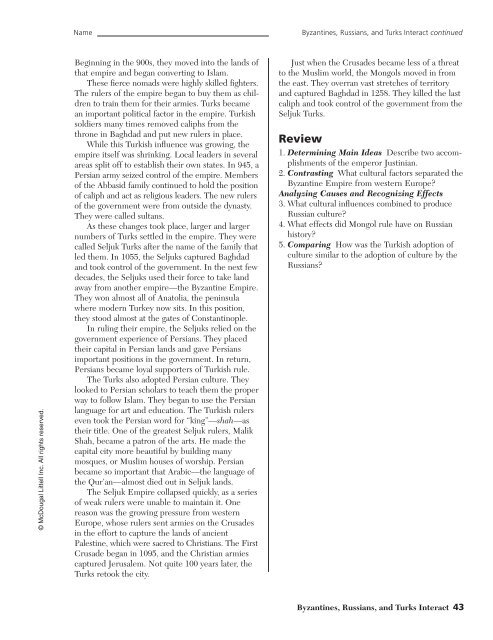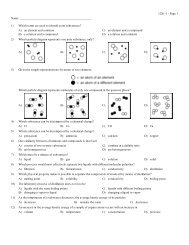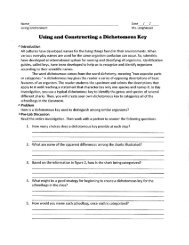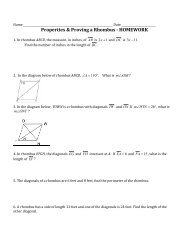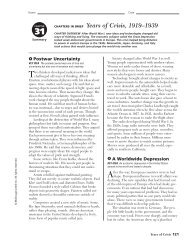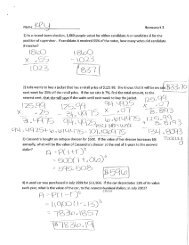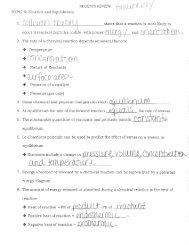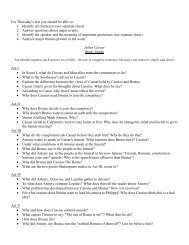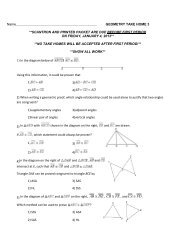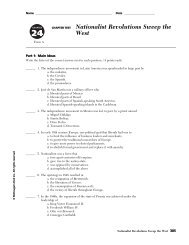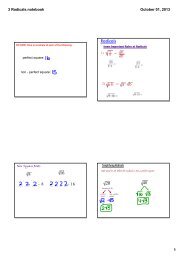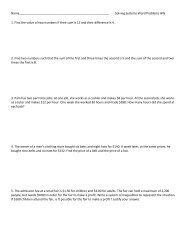Chapter 11 Summary.pdf - stephenkocis
Chapter 11 Summary.pdf - stephenkocis
Chapter 11 Summary.pdf - stephenkocis
- No tags were found...
Create successful ePaper yourself
Turn your PDF publications into a flip-book with our unique Google optimized e-Paper software.
NameByzantines, Russians, and Turks Interact continued© McDougal Littell Inc. All rights reserved.Beginning in the 900s, they moved into the lands ofthat empire and began converting to Islam.These fierce nomads were highly skilled fighters.The rulers of the empire began to buy them as childrento train them for their armies. Turks becamean important political factor in the empire. Turkishsoldiers many times removed caliphs from thethrone in Baghdad and put new rulers in place.While this Turkish influence was growing, theempire itself was shrinking. Local leaders in severalareas split off to establish their own states. In 945, aPersian army seized control of the empire. Membersof the Abbasid family continued to hold the positionof caliph and act as religious leaders. The new rulersof the government were from outside the dynasty.They were called sultans.As these changes took place, larger and largernumbers of Turks settled in the empire. They werecalled Seljuk Turks after the name of the family thatled them. In 1055, the Seljuks captured Baghdadand took control of the government. In the next fewdecades, the Seljuks used their force to take landaway from another empire—the Byzantine Empire.They won almost all of Anatolia, the peninsulawhere modern Turkey now sits. In this position,they stood almost at the gates of Constantinople.In ruling their empire, the Seljuks relied on thegovernment experience of Persians. They placedtheir capital in Persian lands and gave Persiansimportant positions in the government. In return,Persians became loyal supporters of Turkish rule.The Turks also adopted Persian culture. Theylooked to Persian scholars to teach them the properway to follow Islam. They began to use the Persianlanguage for art and education. The Turkish rulerseven took the Persian word for “king”—shah—astheir title. One of the greatest Seljuk rulers, MalikShah, became a patron of the arts. He made thecapital city more beautiful by building manymosques, or Muslim houses of worship. Persianbecame so important that Arabic—the language ofthe Qur’an—almost died out in Seljuk lands.The Seljuk Empire collapsed quickly, as a seriesof weak rulers were unable to maintain it. Onereason was the growing pressure from westernEurope, whose rulers sent armies on the Crusadesin the effort to capture the lands of ancientPalestine, which were sacred to Christians. The FirstCrusade began in 1095, and the Christian armiescaptured Jerusalem. Not quite 100 years later, theTurks retook the city.Just when the Crusades became less of a threatto the Muslim world, the Mongols moved in fromthe east. They overran vast stretches of territoryand captured Baghdad in 1258. They killed the lastcaliph and took control of the government from theSeljuk Turks.Review1. Determining Main Ideas Describe two accomplishmentsof the emperor Justinian.2. Contrasting What cultural factors separated theByzantine Empire from western Europe?Analyzing Causes and Recognizing Effects3. What cultural influences combined to produceRussian culture?4. What effects did Mongol rule have on Russianhistory?5. Comparing How was the Turkish adoption ofculture similar to the adoption of culture by theRussians?Byzantines, Russians, and Turks Interact 43


